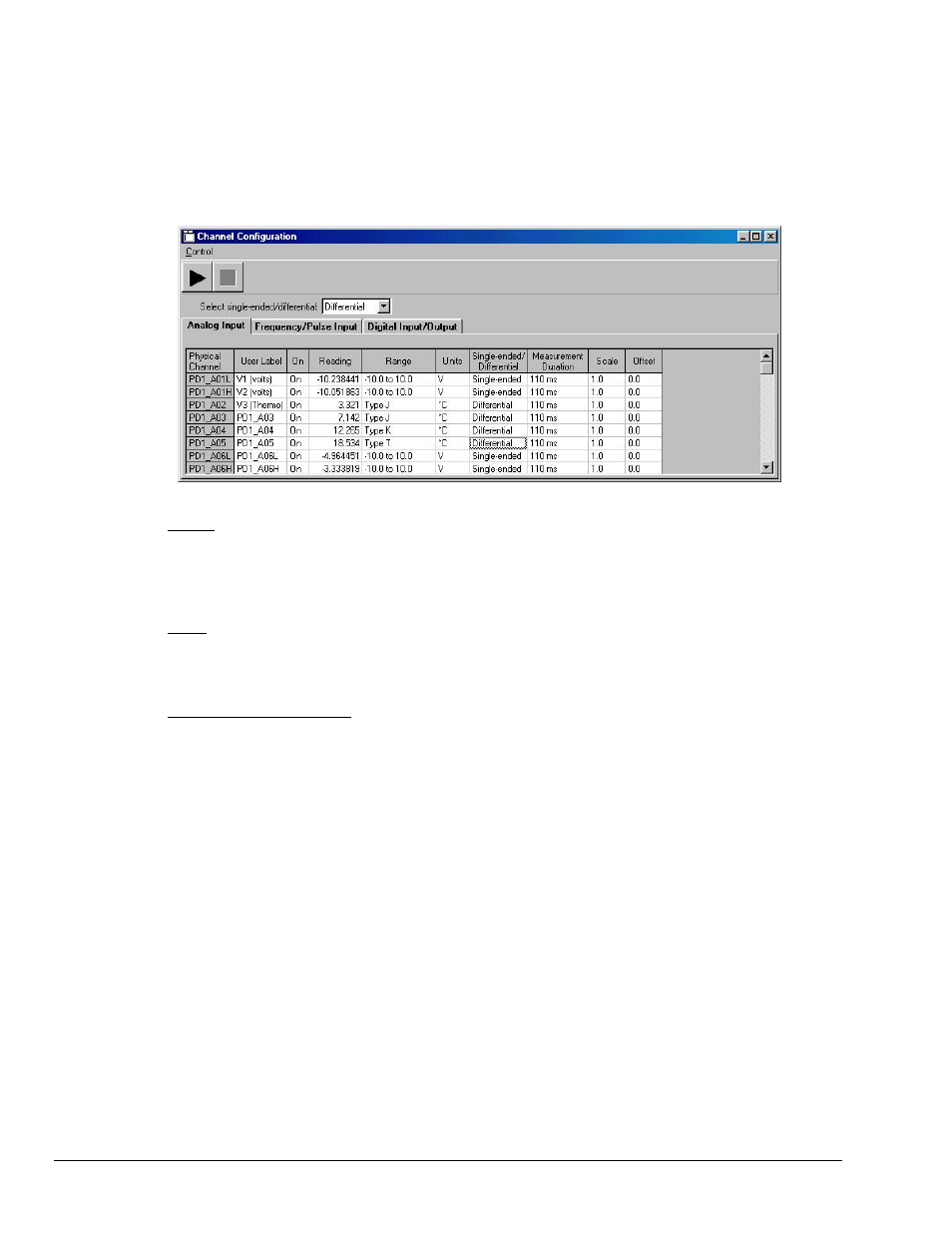Analog input spreadsheet – Measurement Computing Personal Daq rev.6.0 User Manual
Page 52

4-10 Personal DaqView
989394
Personal Daq User’s Manual
Analog Input Spreadsheet
The Analog Input spreadsheet allows you to configure analog input channels. Each row shows a single
channel and its configuration. The following text provides more detail regarding the channel configuration
parameters for Analog Input.
Note that columns labeled Physical Channel, User Label, On/Off, Reading, Scale, and Offset are discussed
in the immediately preceding section, Common Spreadsheet Columns.
Channel Configuration Window, Selected for Analog Input Spreadsheet
Range
⎯ Displays the range and provides access to a pull-down list of available voltage ranges, as well
as a list of available thermocouple types. In addition to voltage, analog input can be selected for
thermocouple types J, K, T, E, R, S, B, and N. Note that the range and units columns are interrelated. For
example, selecting a thermocouple from the range list will automatically bring up the default unit indicated
in Preferences, Measurement Units in the View pull-down menu.
Units
⎯ Displays units and allows the user to key-in different units when the cell is selected. Units may
be V, mV, uV, or created special by the user (as in the B:volts example, page 4-9). In addition, when a
thermocouple type is selected from the range pull-down list, units of °C, °F, °K, or °R are possible. (Also
see Scale & Offset, page 4-7).
Single-ended/Differential
⎯ Identifies the channel mode as single-ended or differential and is used to
change the mode configuration. When changing from differential to single-ended mode, a new channel
row is added, as well as a new default label. For example: Changing the mode of channel PD_1A01
(Personal Daq Unit 1, Analog Channel 01) from differential to single-ended results in two channels with
default Physical Channel labels and User Labels of PD_1A01L and PD_1A01H.
Single-ended inputs are typically used with signals that share the same common low (COM) such as
multiple batteries which have their negative sides connected in common. For Personal Daq applications,
the single-ended mode is not to be used for thermocouples.
Differential inputs are required when signals do not share the same common low, such as in the typical use
of thermocouples. A simple example showing two single-ended inputs (V1 and V2) and a differential
input (V3) follows.
Note that V1, V2 and V3 (from the following figure), correspond with the first three channels on the
previous screen shot. In the screen capture, V1 and V2 are shown to have “V” for units and are single-
ended. V3 a thermocouple with units of °C and is shown to be Differential.
